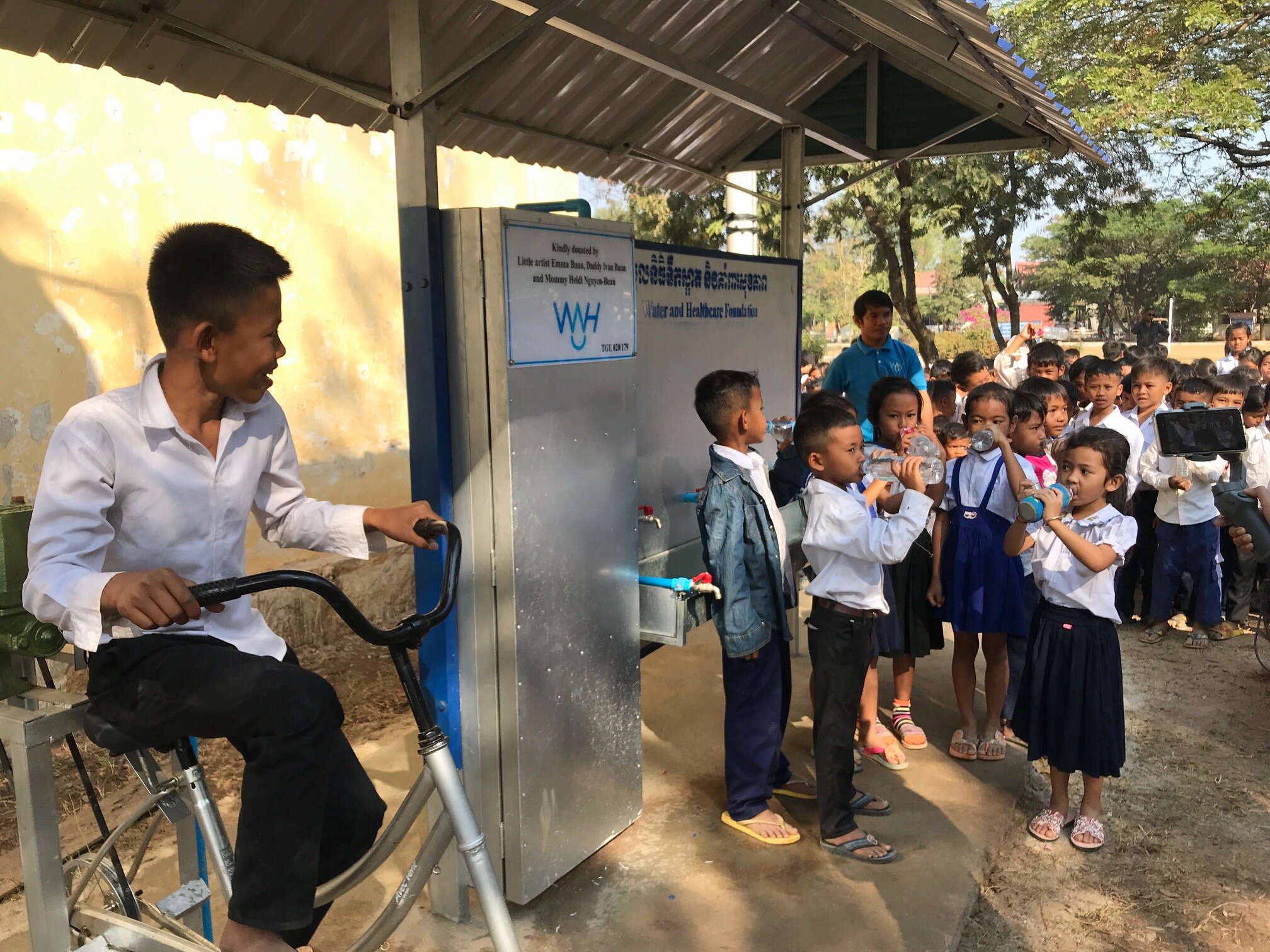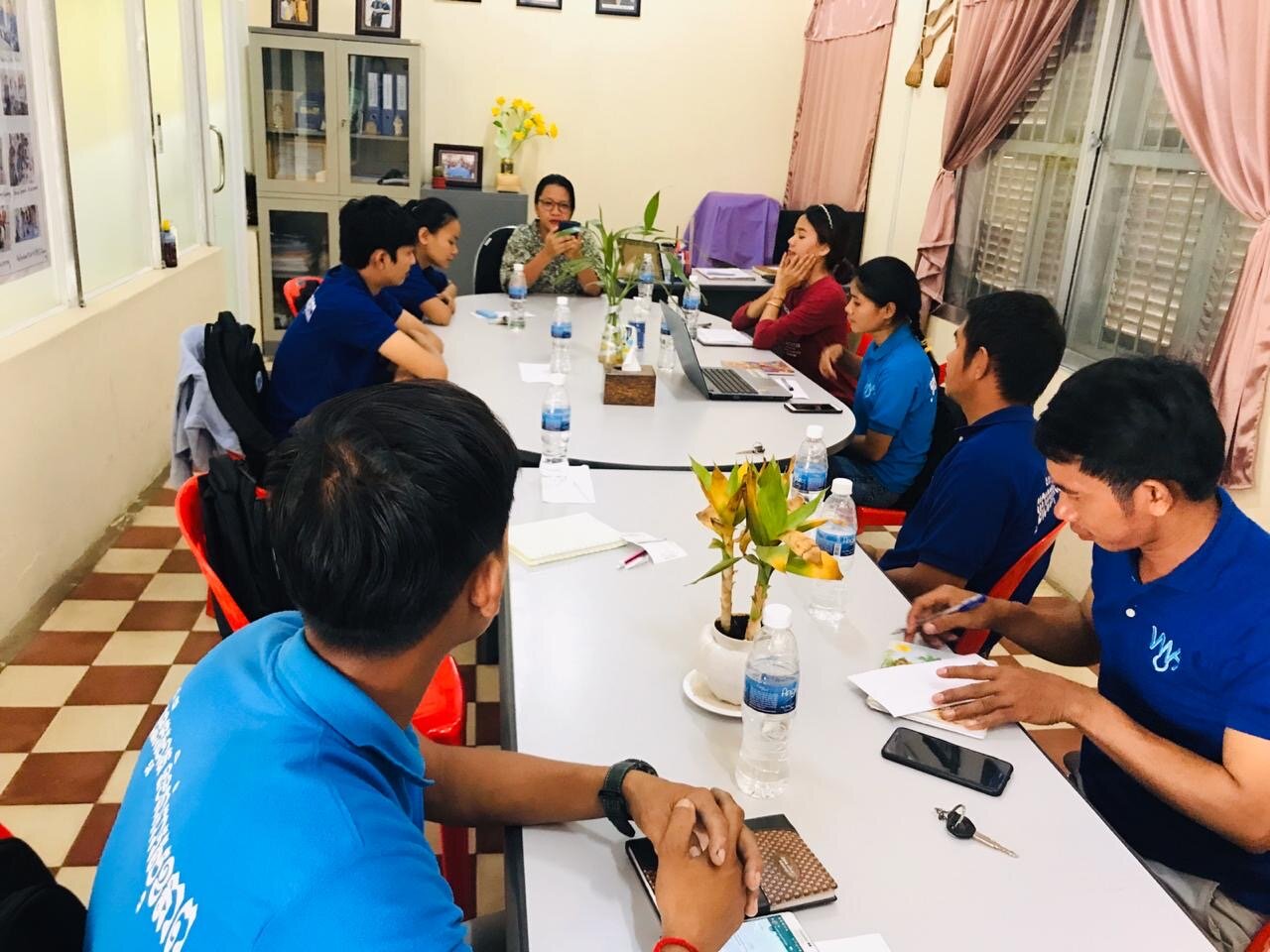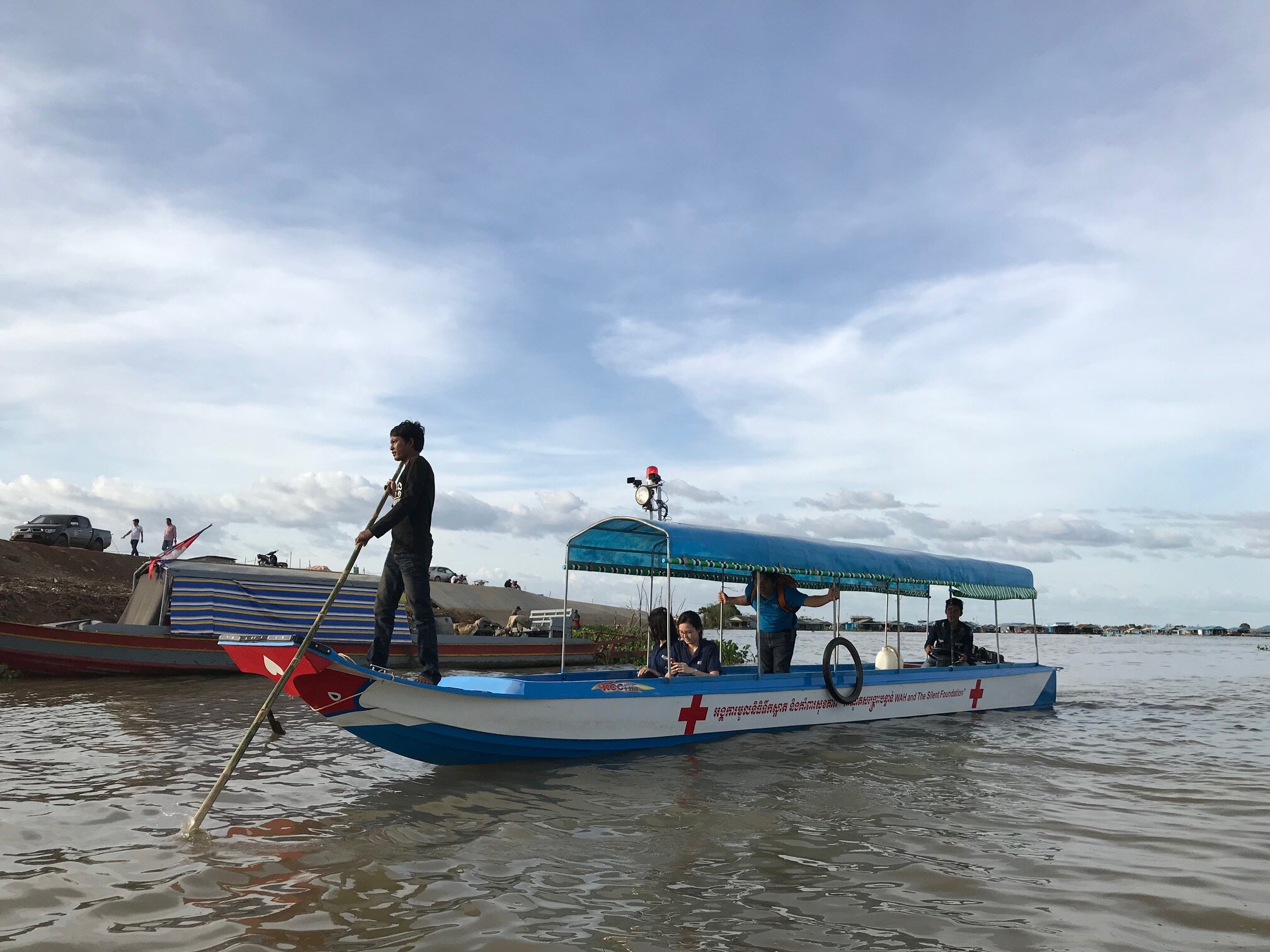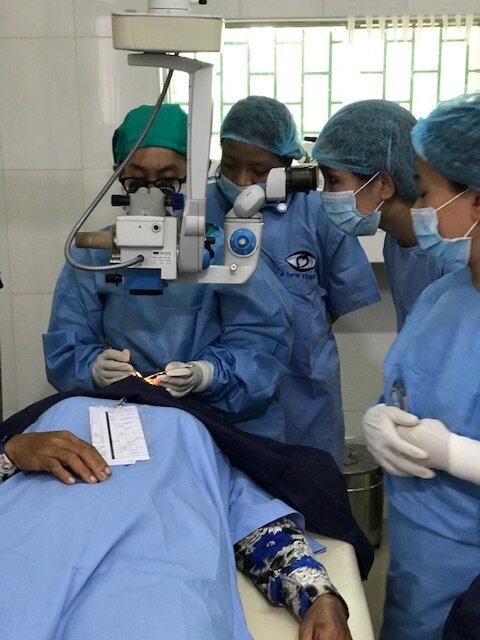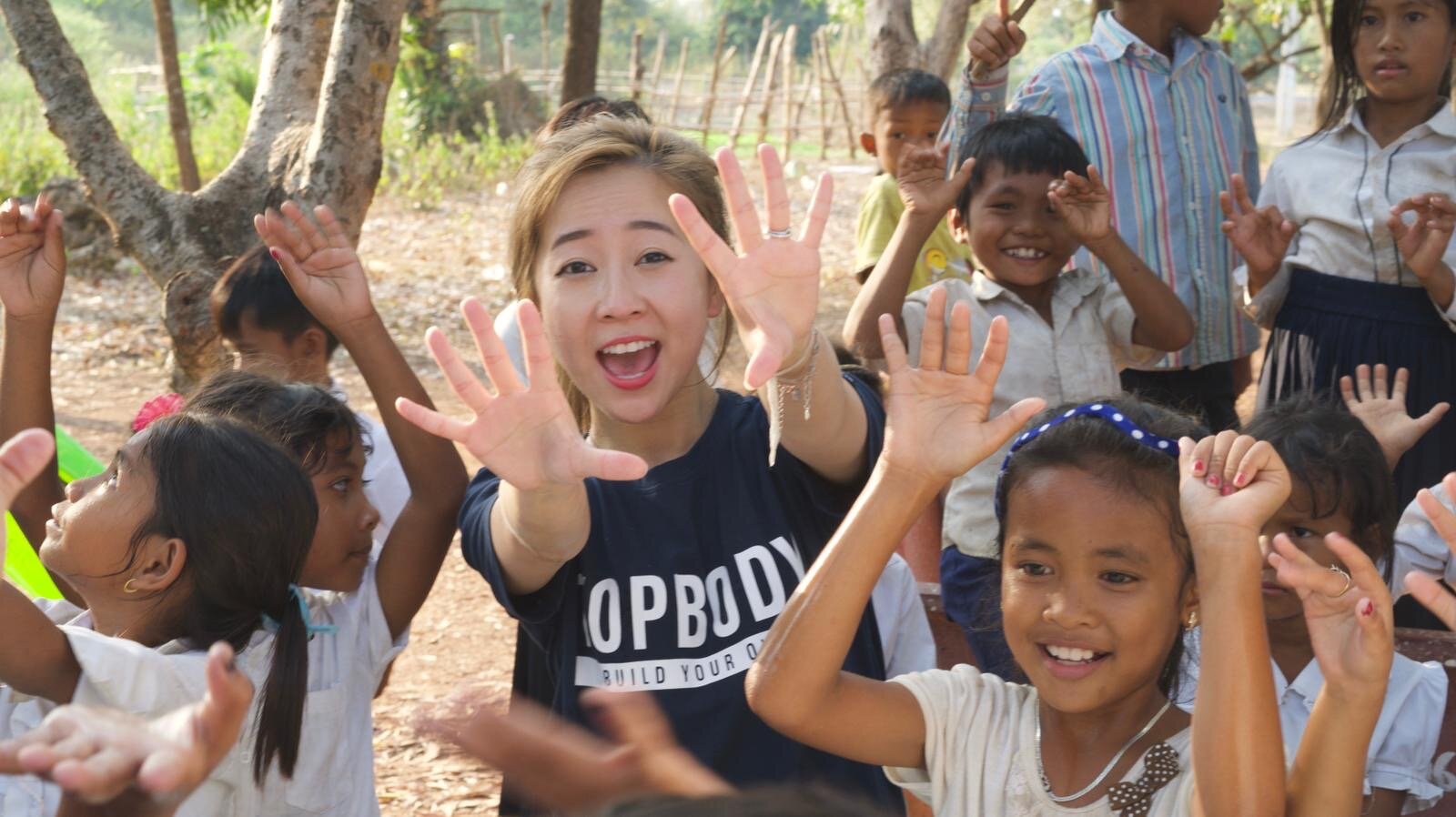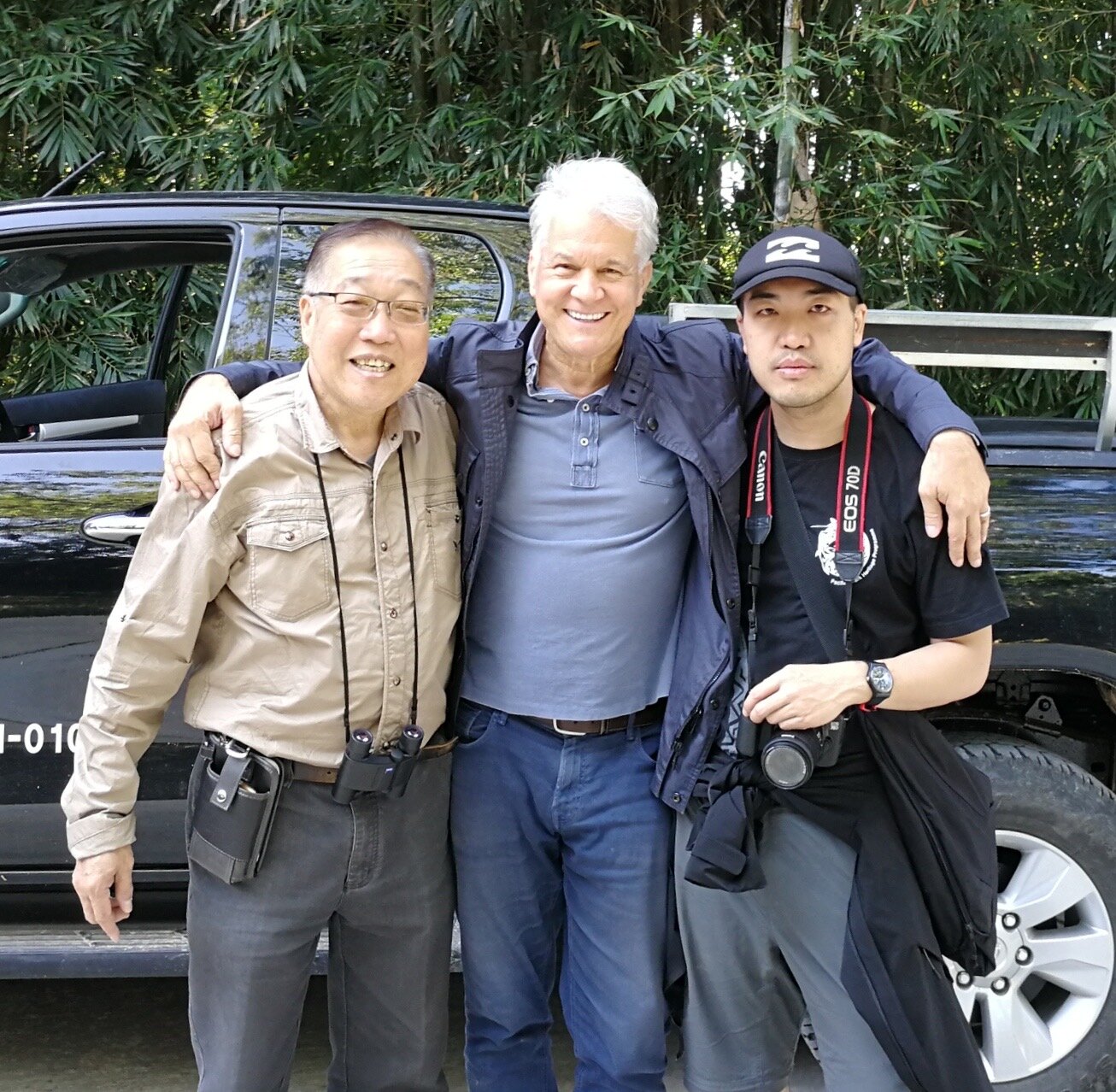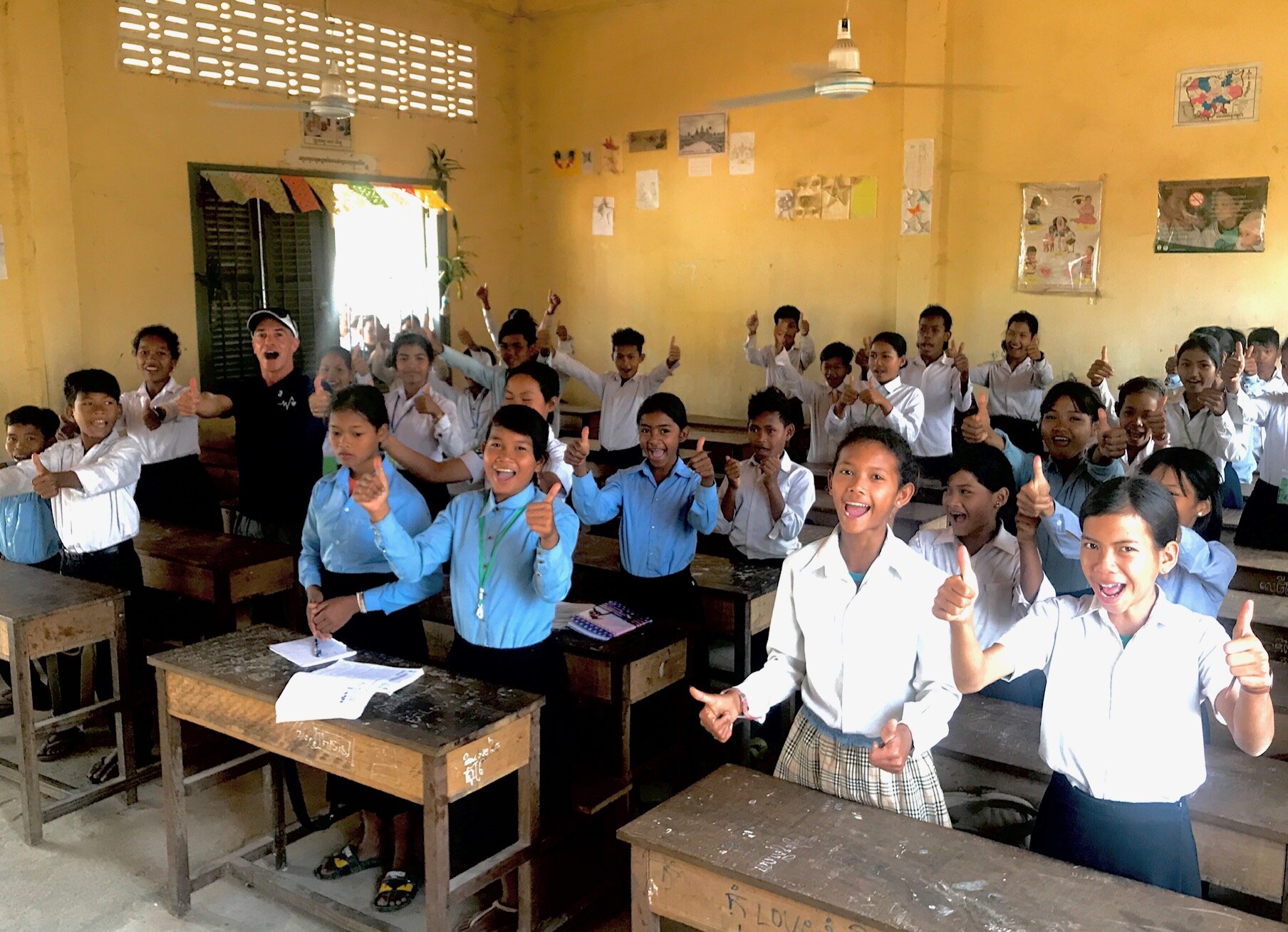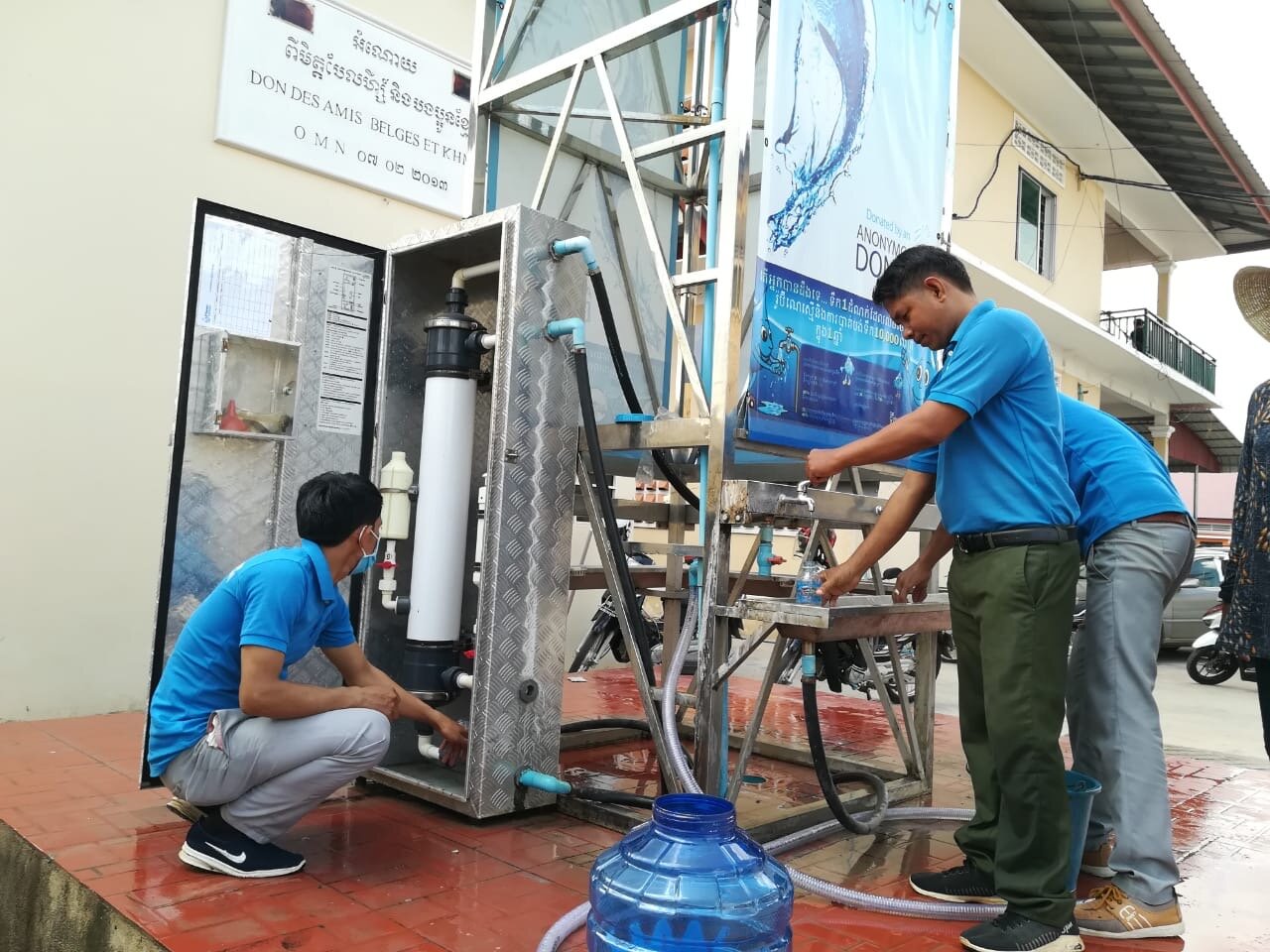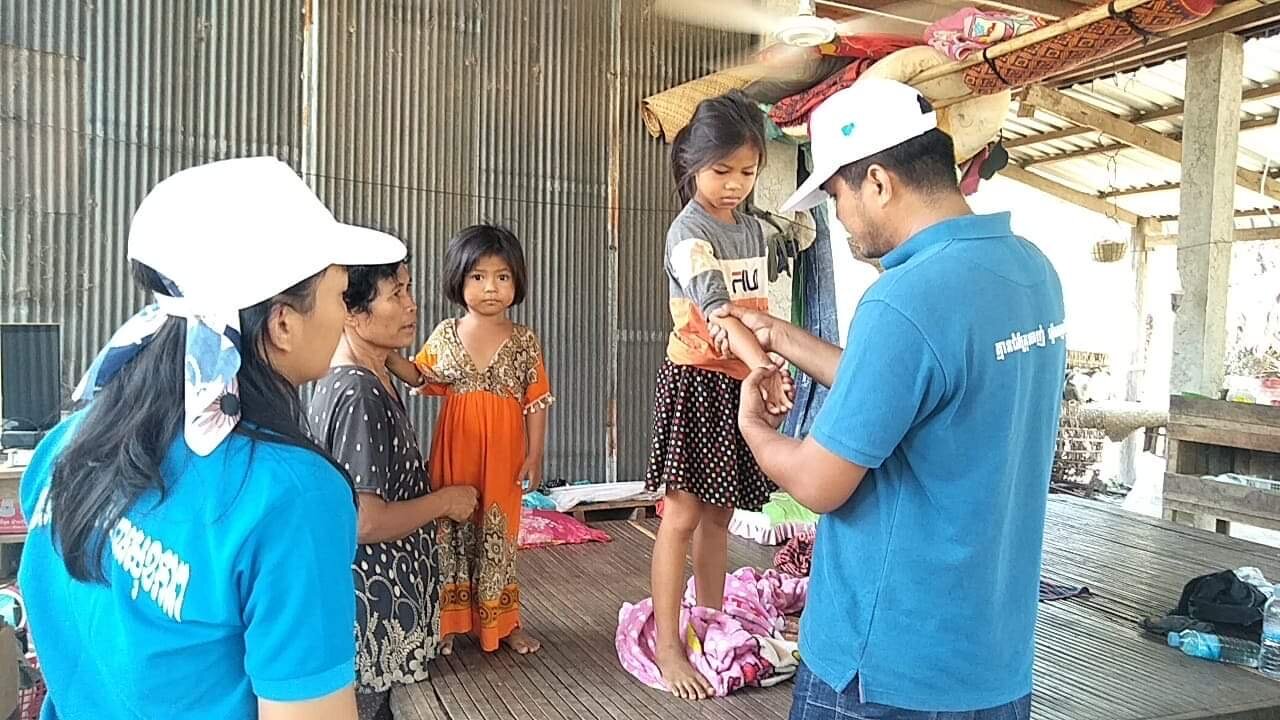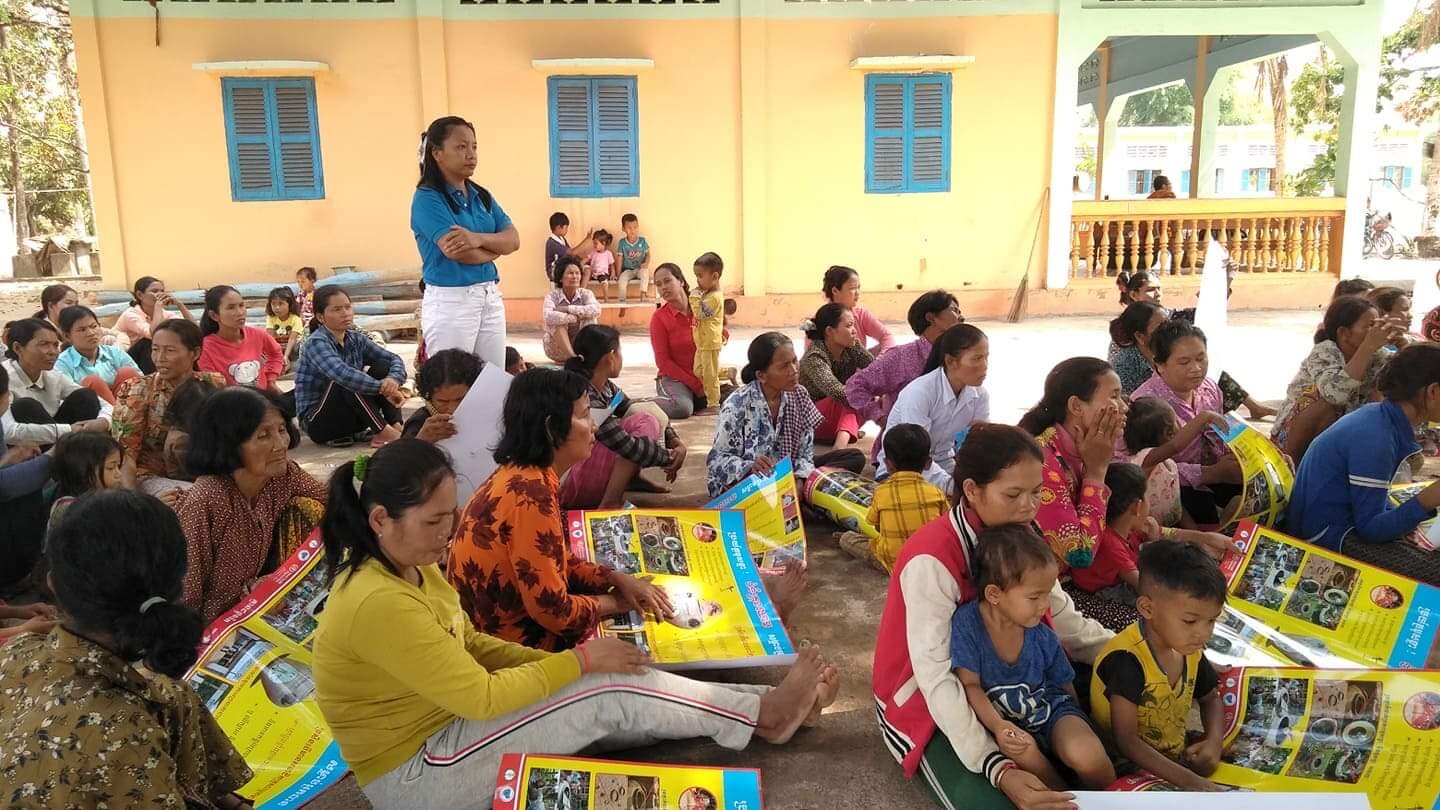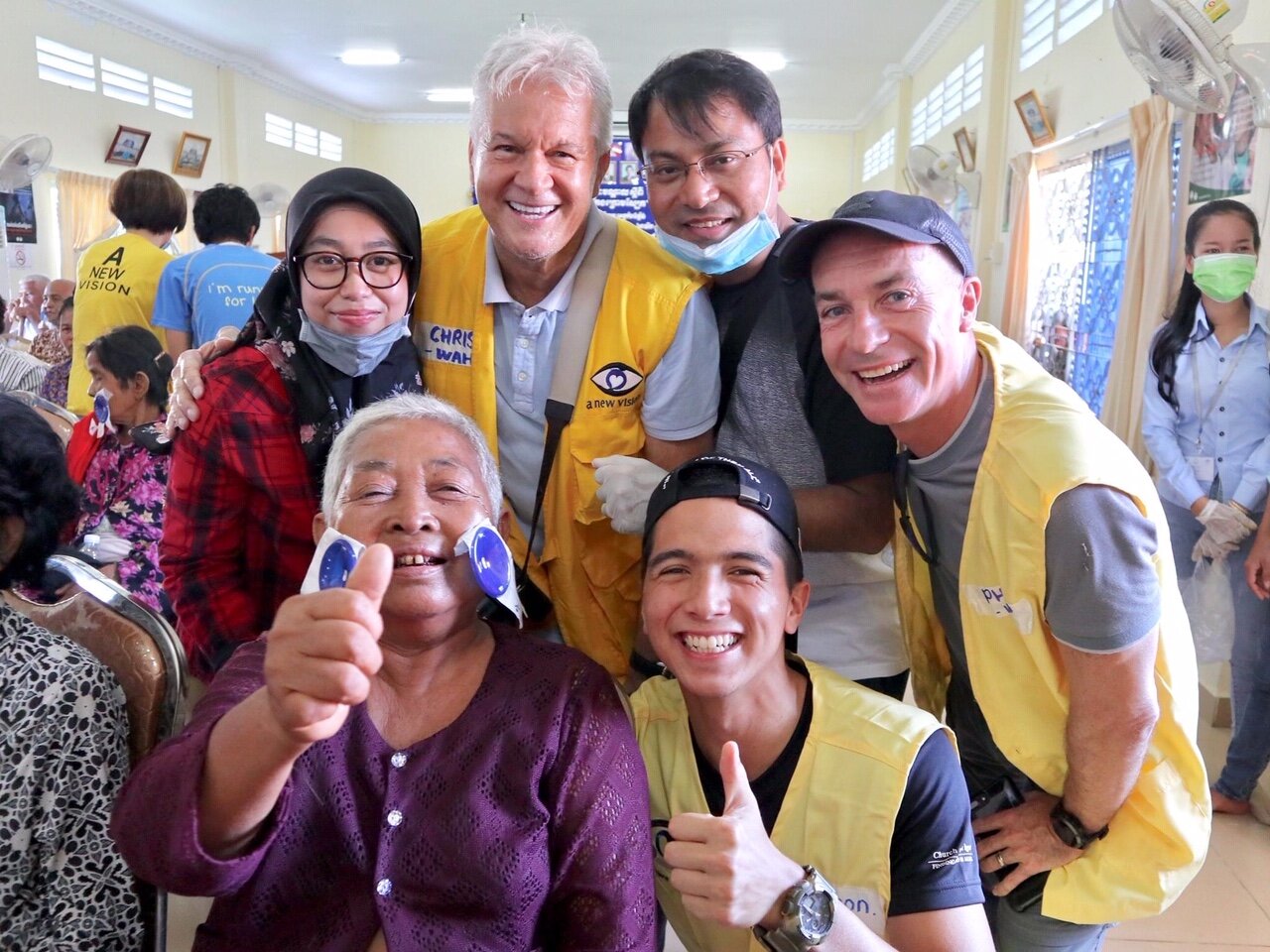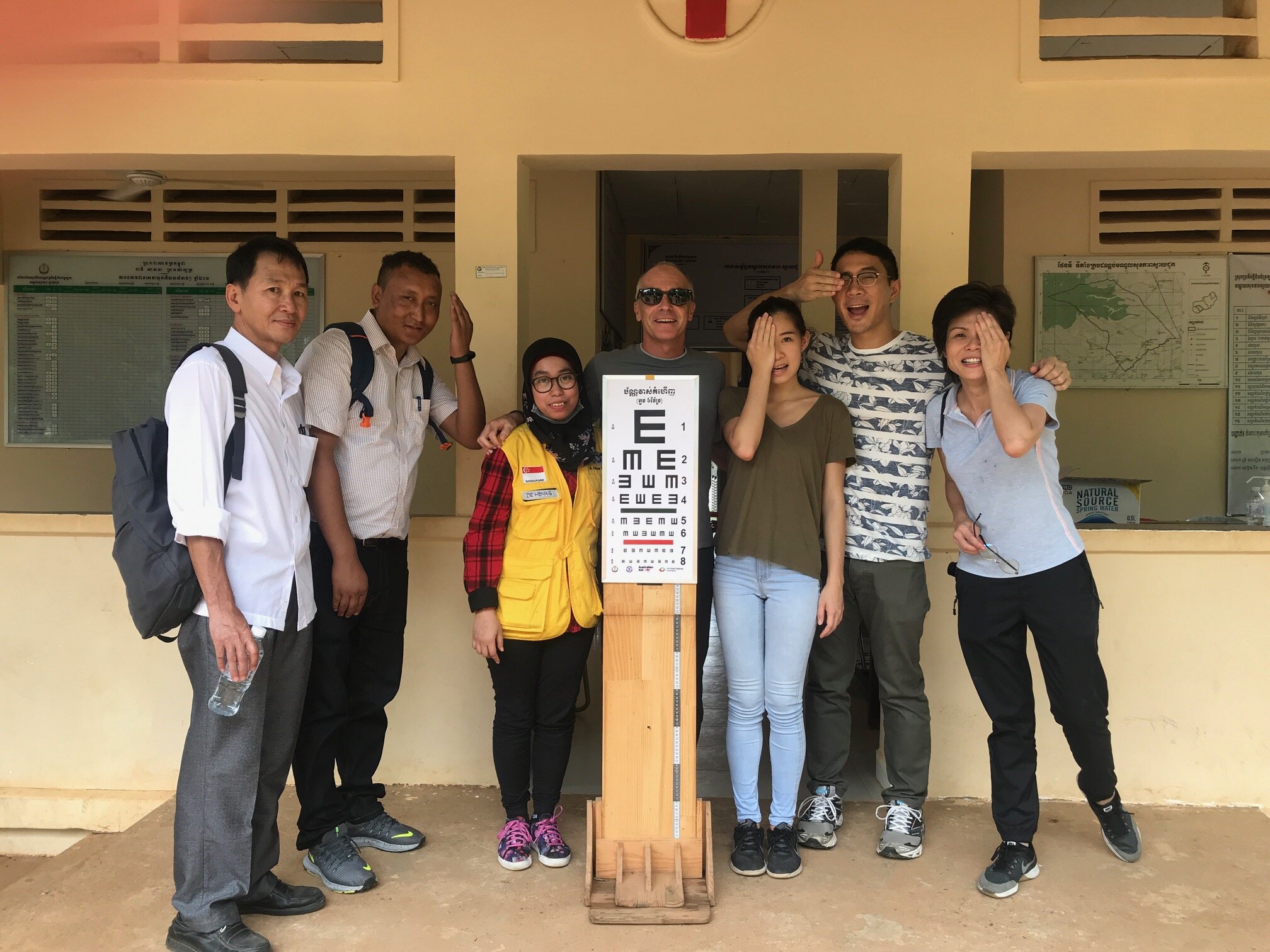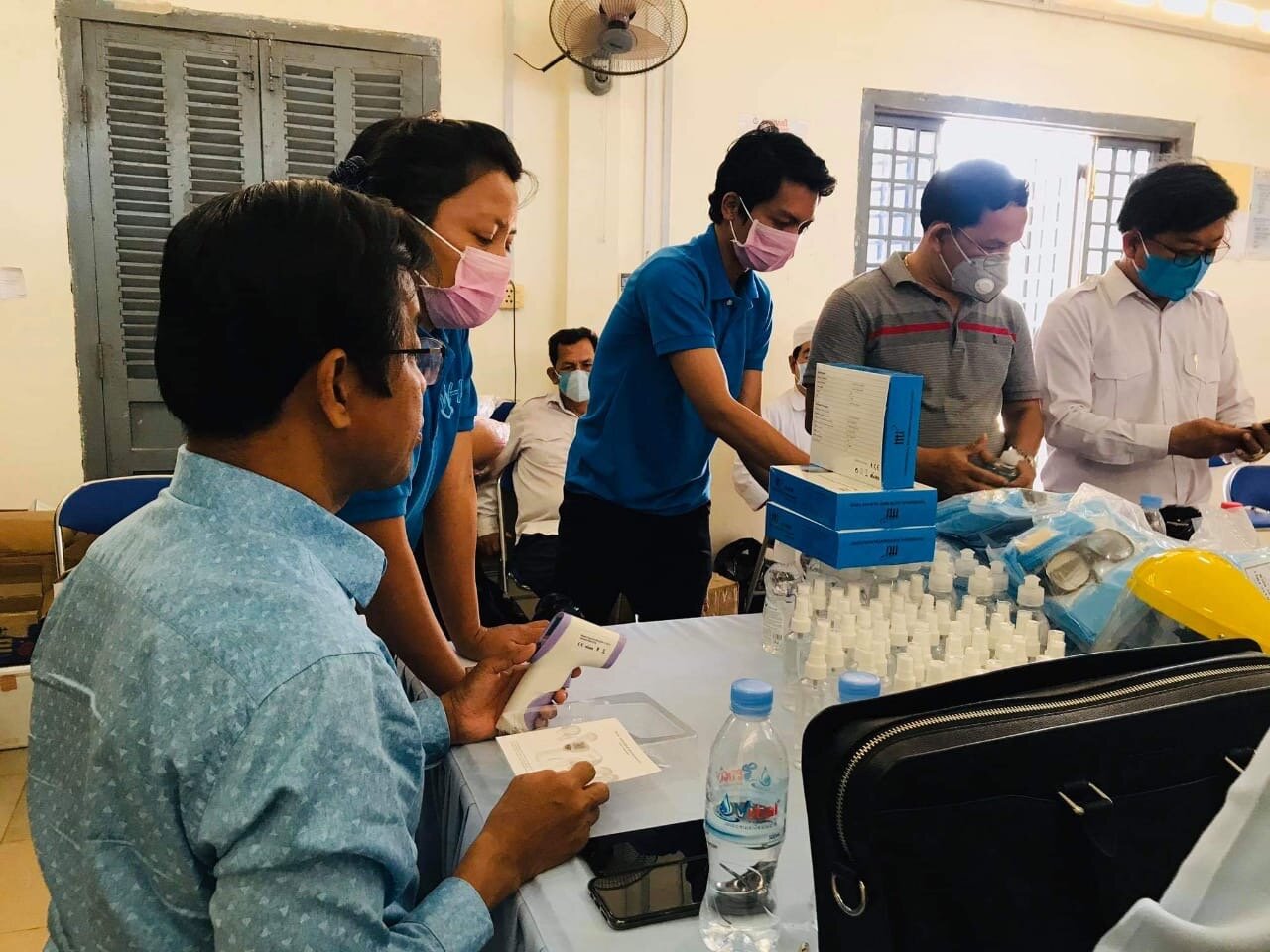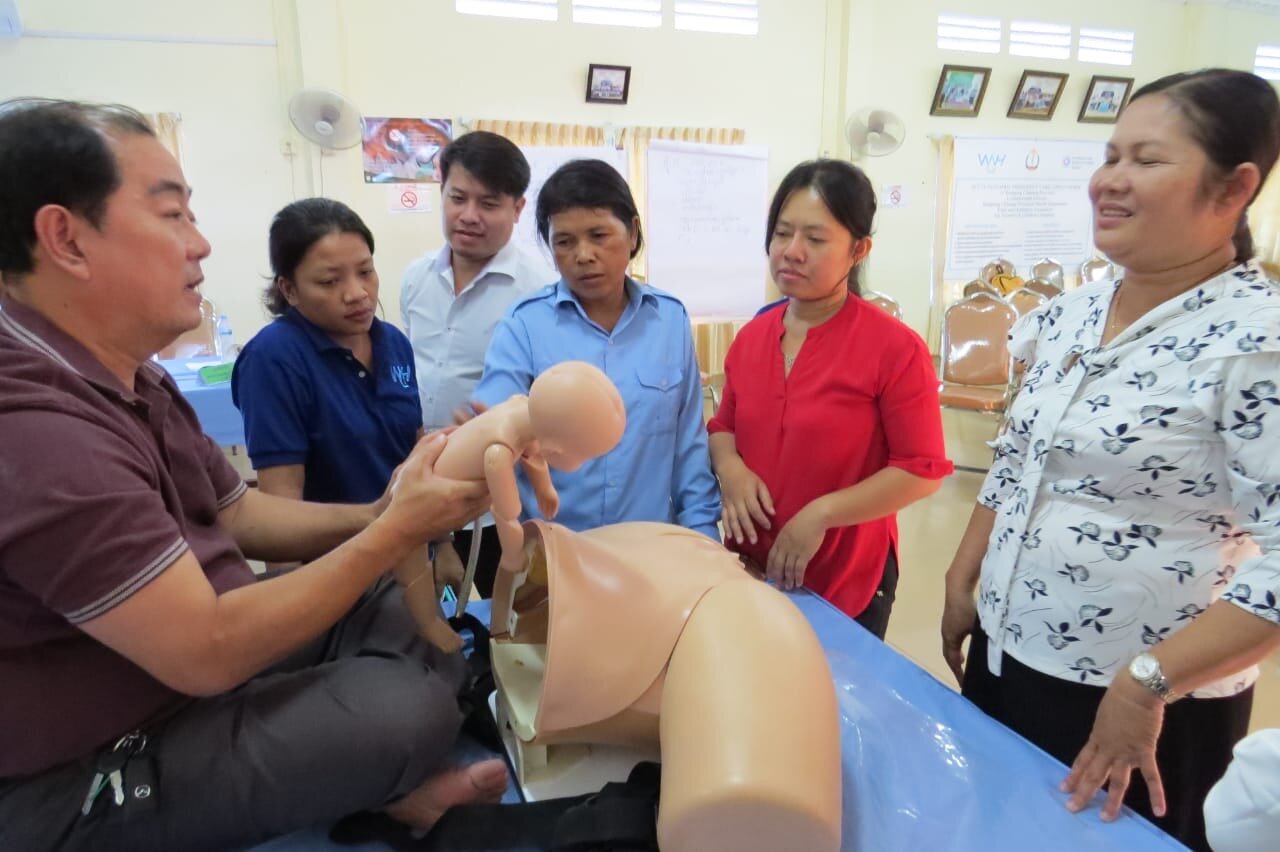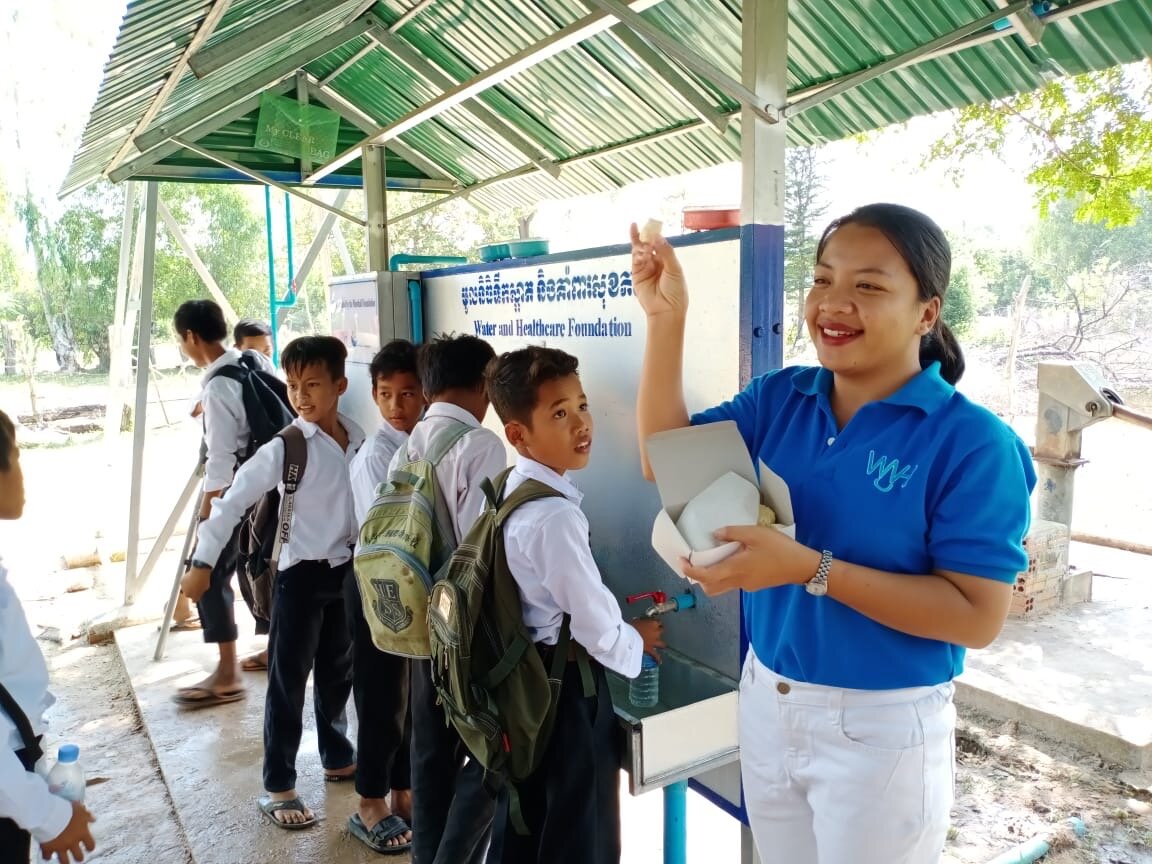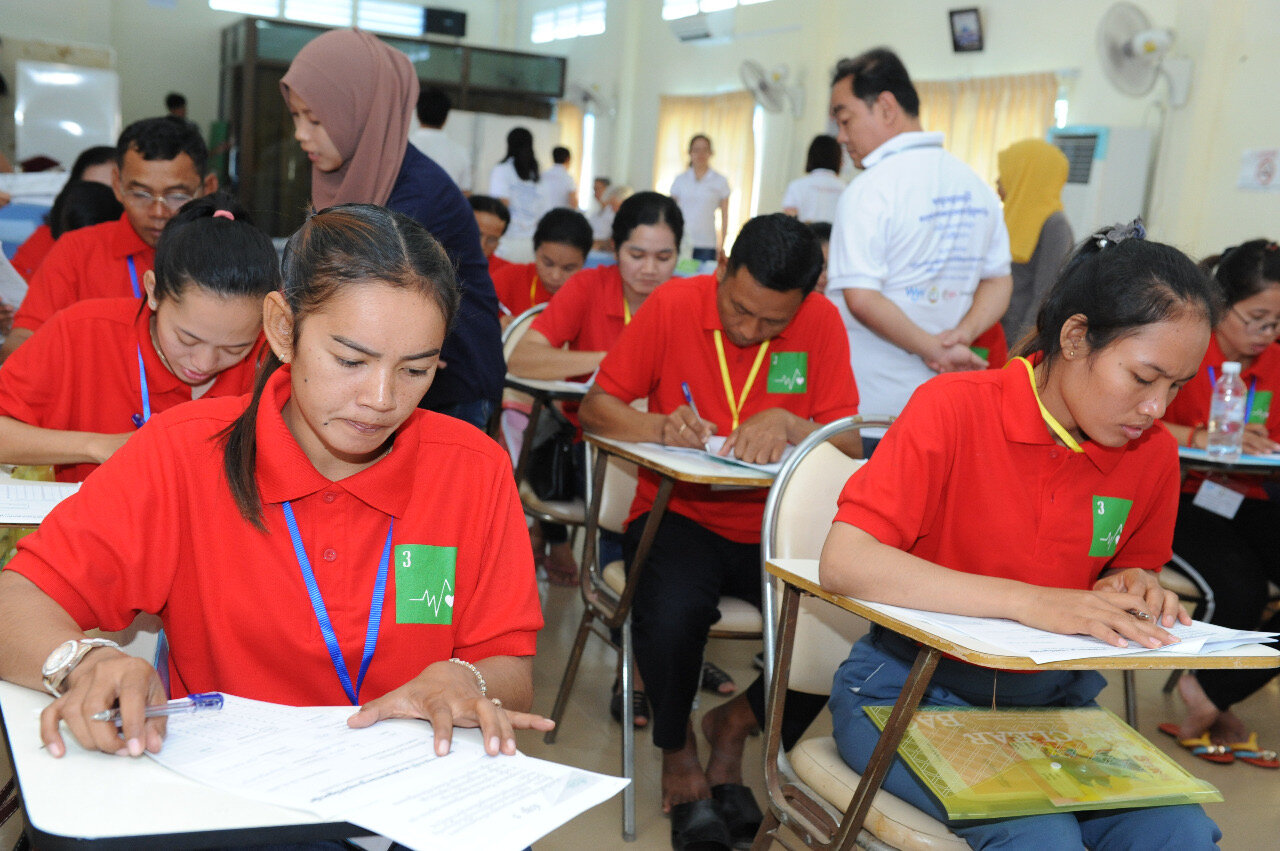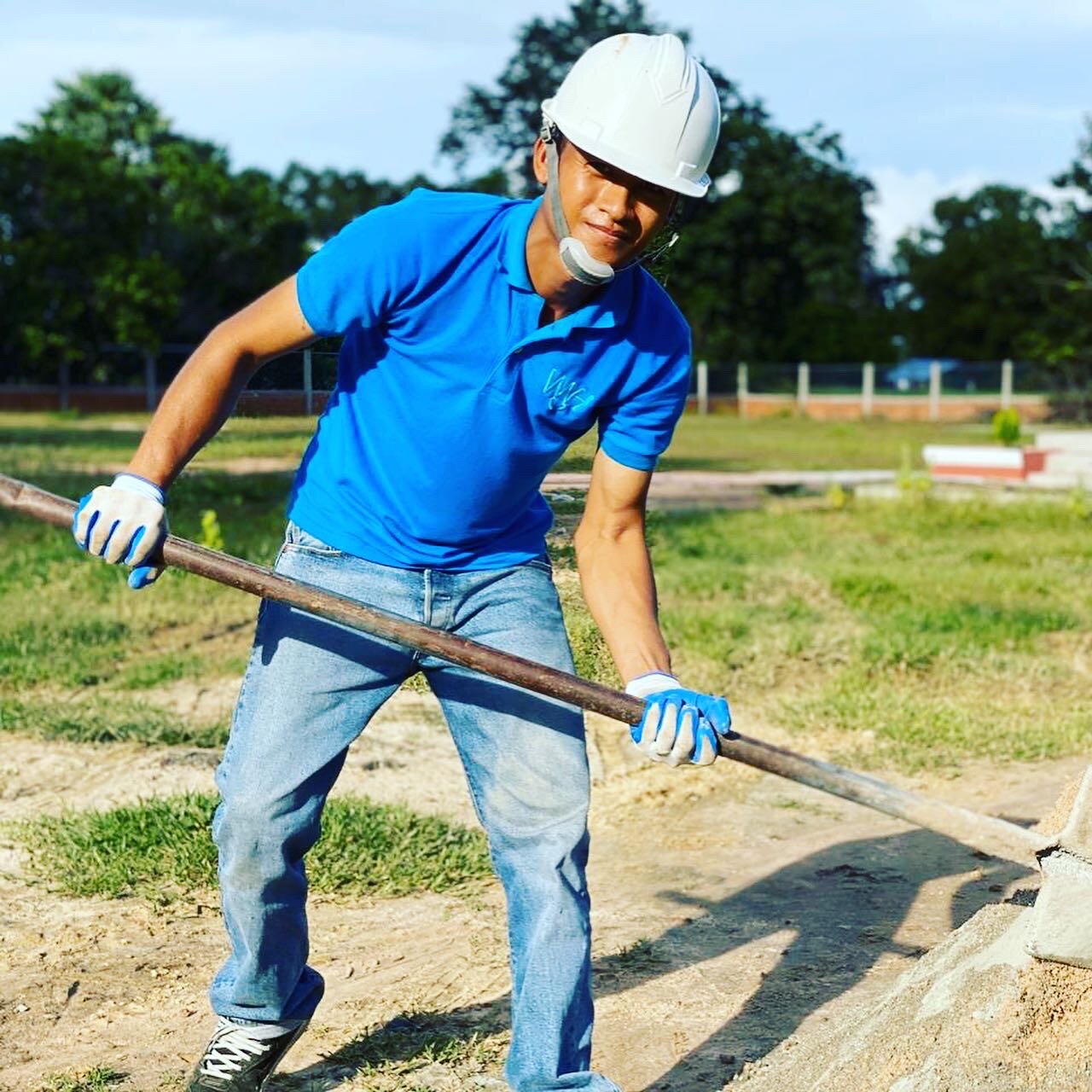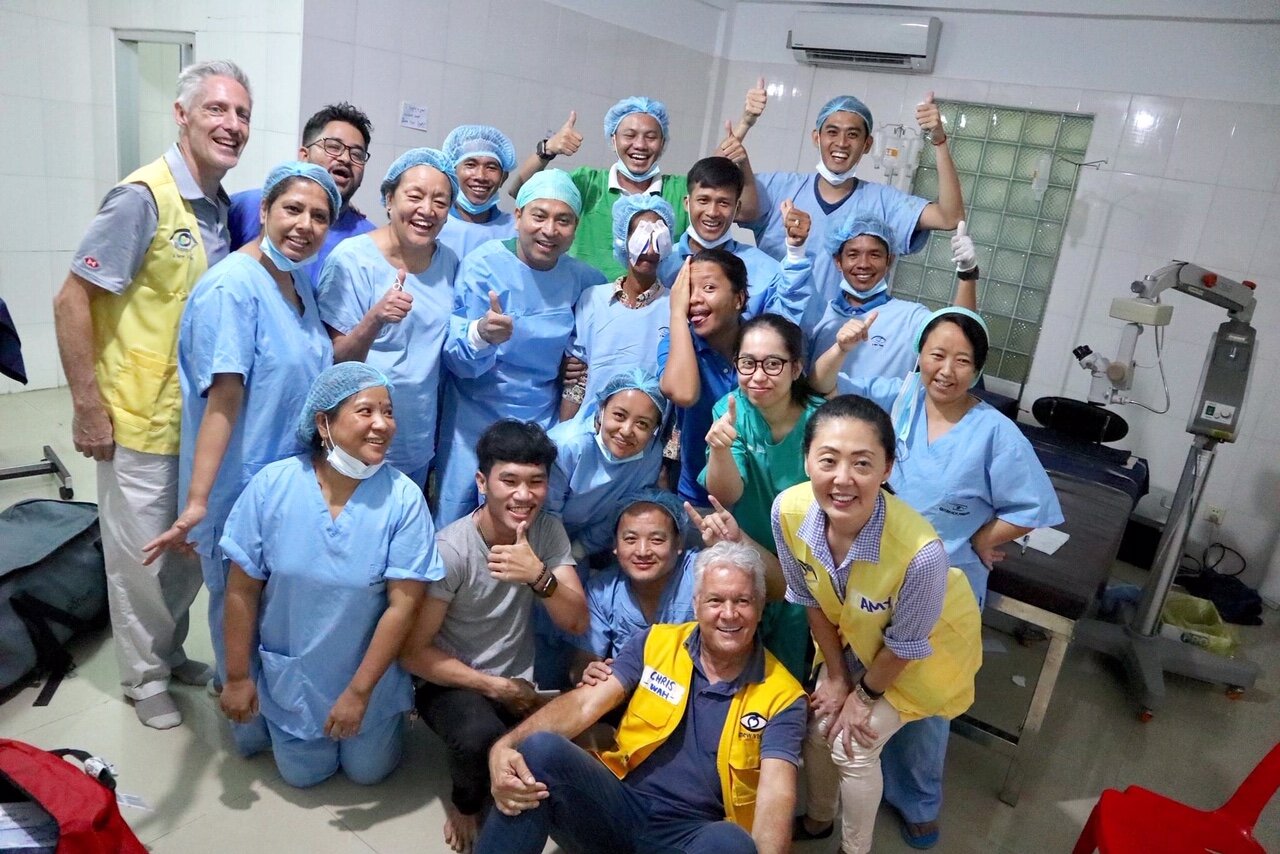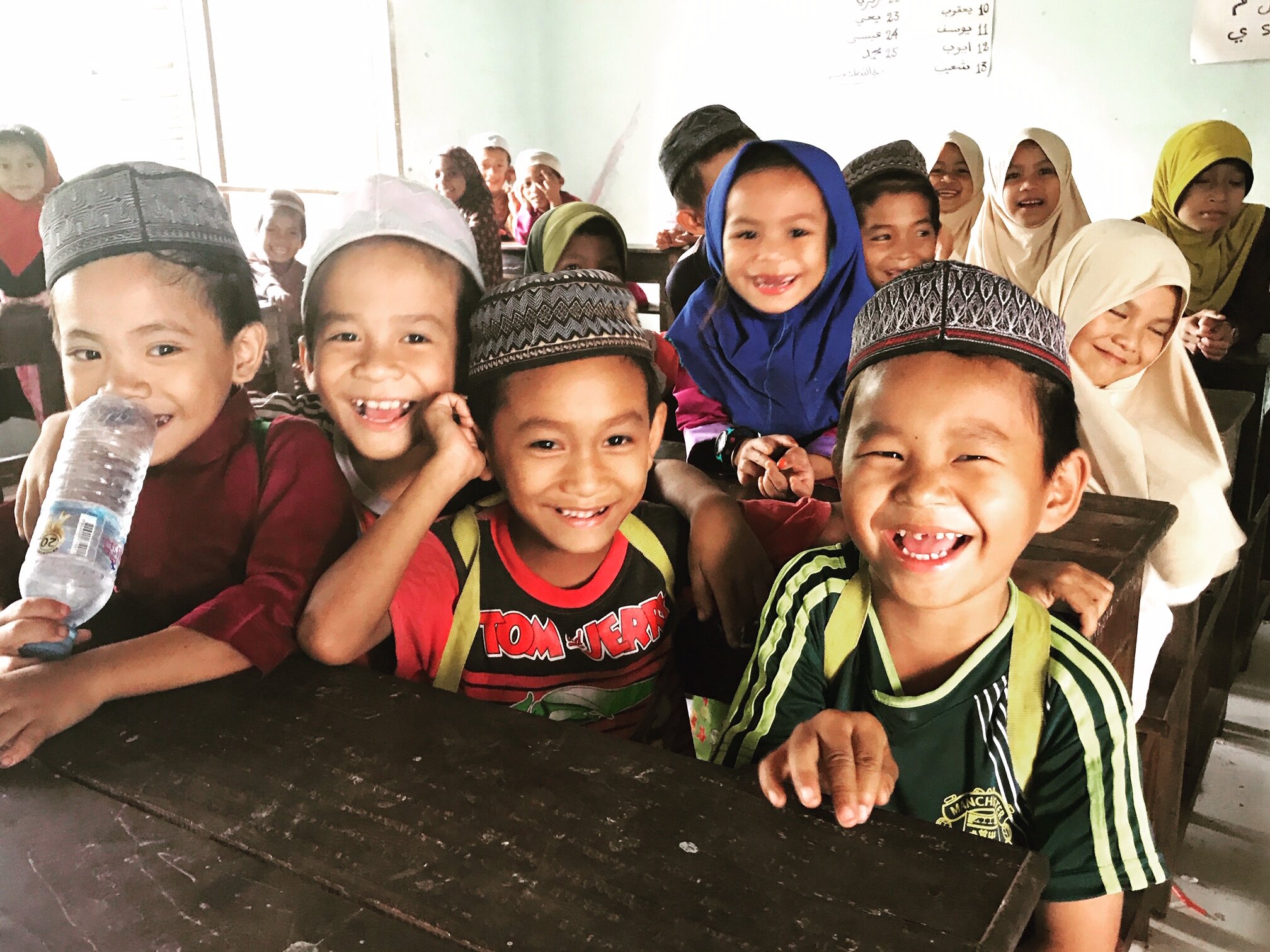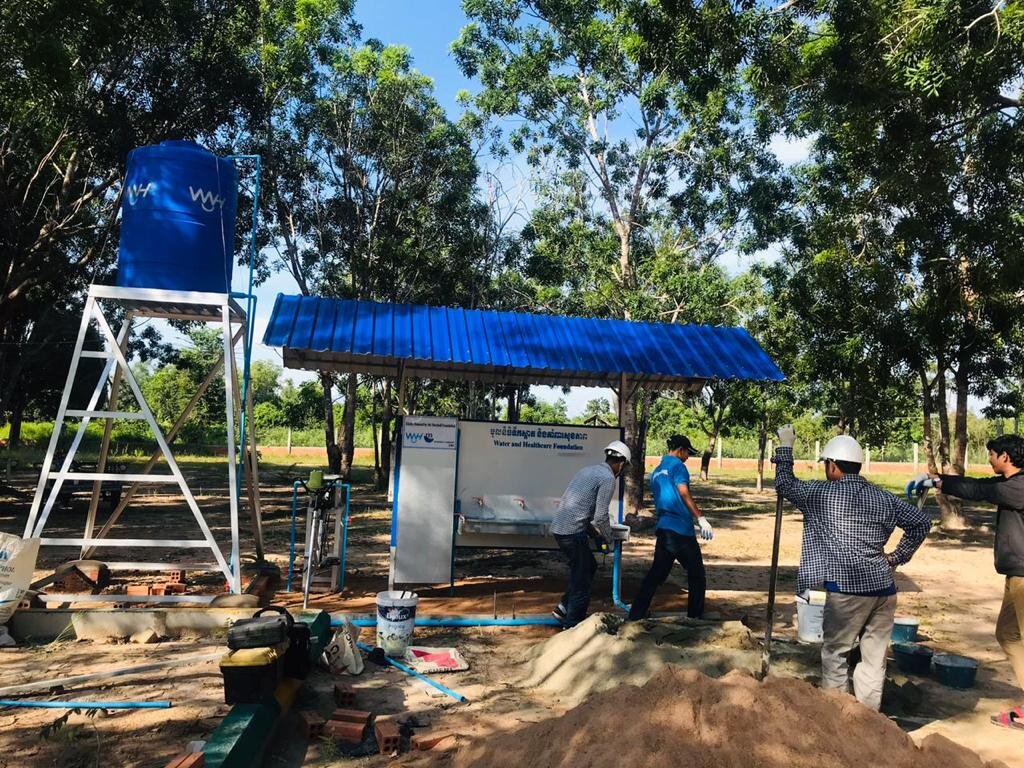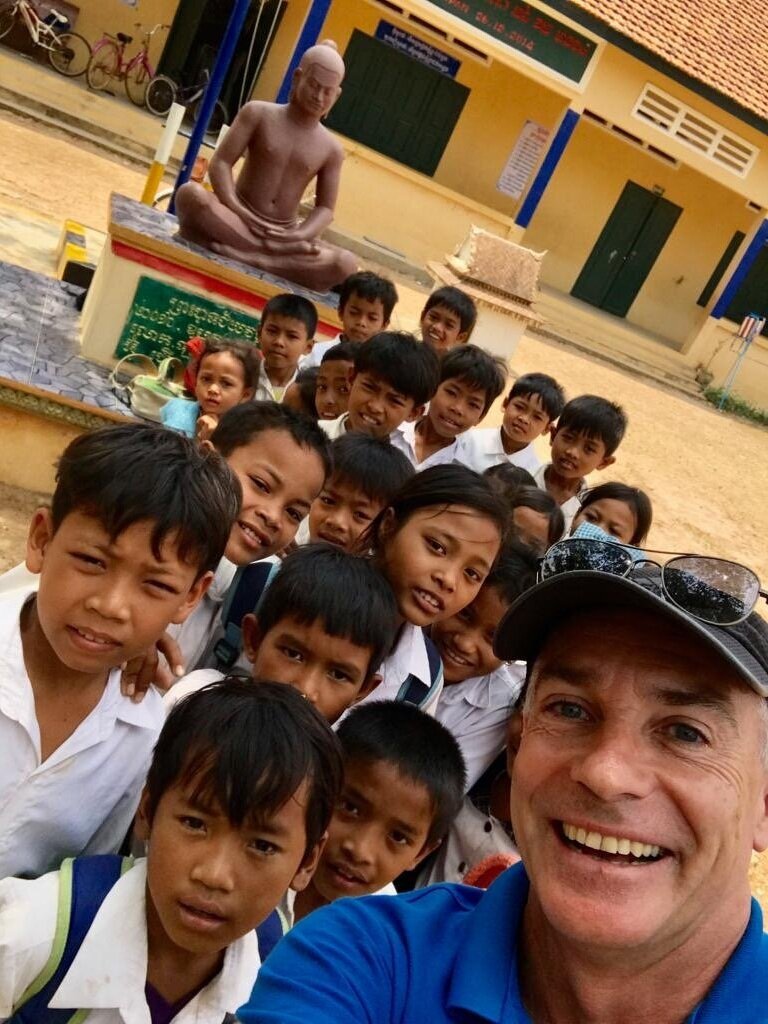Over 15 Years of WAH
Written by: Christopher Wilson, Founder of WAH
start of something big
More than a decade ago whilst working in Cambodia, I was discussing the problems facing communities in rural provinces with local partners. People’s lives were ripped apart until the 1990’s by Pol Pot and his regime (Khmer Rouge). Many still remember the killings and the manipulation, but the Cambodian people are strong, resilient and forgiving. After hearing all the personal stories of heartbreak and suffering, I felt a deep need to help underserved communities become healthier and happier, and as a result more productive in their businesses.
In 2008, I spent close to nine months researching the issues which were negatively affecting rural communities, and one aspect came up time after time; the lack of access to clean, safe water. At the time of research:
8% of children were not reaching their 5th birthday
60% of Cambodians did not have access to clean water.
Education and awareness on water and hygiene were low, and communities drank contaminated water from shallow wells in their villages, causing sickness and death
A high number of mothers were dying during childbirth
A high number of respiratory issues were found in children
Every human being deserves the right to clean water, basic healthcare, and a good education; three things which we, in the West and industrialised world, often take for granted. So it was decided that we would start a private venture to help improve the lives and conditions of rural communities in Cambodia, starting with Kampong Chhnang, and starting with clean water. The solution was to install gravity flow water filters in schools, health centres, hospitals, villages, orphanages, and places of worship.
why kampong chhnang?
We chose Kampong Chhnang because we had a network of people there who were well educated, socially minded and had experience in working for social enterprises. We knew early on that for us to have a successful and sustainable operation, it was critically important that we built a local team, on the ground, with deep knowledge and connection with the local communities of Kampong Chhnang (KC). KC is now a quick two hour drive away from the capital, Phnom Penh, a 2 hour direct flight from Singapore. However, when we started, the drive was a minimum of four hours on bumpy, unsealed roads. The expansive Tonle Sap River runs through KC from northwest to southeast, creating hundreds of islets and waterways. Access to some communities is only managed through a series of ferry rides making the province a demanding one to work in. Although Tonle Sap River provides a plentiful supply of fish, during the monsoon season (May June July) the water level rises and the waters are more contaminated as a result of runoff from everything upstream and surroundings. In some years where rains are heavier than normal, people living on the islands along the river have to be evacuated to higher ground as their houses are submerged.
Kampong Chhnang has 42 health centres, one provincial hospital, two operational district hospitals (OD’s, which are smaller hospitals with less specialised services), and 549 schools. We started our venture by installing clean water systems into schools, and all three hospitals and 42 health centres because it was important for procedures, small surgeries, and births to be carried out with clean water. When families visit the health centres, they have access to clean water which is placed in the reception area for drinking and bringing home. At the same time we installed clean water systems into schools , a total of 183 (as of 31 Dec 2019). By working with schools, their principals and teachers, we knew they would care and maintain the systems for their students and effectively their families. Students spend their time and energy on the bicycle-powered water system, and these young community members are the most susceptible to illness from dirty water and dehydration. By focusing on schools, it develops a strong and long term relationship with leaders and by working closely with them, in effect we were immediately reaching out to the entire population of 550,000 people, creating a lasting positive impact on the communities in the entire region.
We installed our first water system in June 2010 in a school in the Tralach District. Ten years later, we have now installed over 200 clean water systems in schools, health centres, and hospitals, with upgrades being made to all the original water systems.
growth, evolution, and improvements
Over the past decade, we have evolved and improved as we continue to work with the different communities and learn more about their needs and their limitations. As with anything, there were growing pains and for us, we have had three major ones:
Assigning Responsibility - switching from village centred to school centred.Installing clean water systems in villages proved very difficult. We aimed to work with villages, with some asking for up to 5 systems, so their citizens would not have to travel too far to get their clean water; river villages are linear, spreading over 1 km from end to end. As time passed (3 years later) we worked with 25 villages. We realised that the success and maintenance of the water systems really depended on the leaders commitment, skills, and enthusiasm. What we found, which was not anticipated, was the large amount of time and resources we were spending managing and maintaining the clean water systems in the villages. We then started to concentrate on working with schools, the teachers and students, essentially assigning them responsibility and ownership as keepers of the water system. Almost immediately we saw positive changes. The teachers were proud to have the water systems on their grounds and they cared for them properly. Students and young children, who are the most susceptible to waterborne illnesses are being educated about the importance of hydration, washing their hands, general hygiene and oral hygiene. As we grow, we are providing students with reusable water bottles and natural homemade soap.
Improved Technology - From diesel generator power to bicycle driven human power
Our first model of the gravity flow clean water system was powered by a generator, to get the water from the well or river to the tank, which costs money to run, caused pollution, and had a maximum flow rate of 60 litres of clean water per hour. We started working with schools to re-design our water system. Our new and current water system is powered by the peddling motion of a static bike cemented to the ground, and increases the flow to up to 400 litres maximum per hour. The “work” of making clean water is shared amongst the students and more water is available to the entire village to access whenever needed.Female leadership - We love our Dr. Rany
Dr. Rany, from Phnom Penh, started volunteering with WAH in 2012. She was brought in originally through the emergency training programs as a translator. Early 2019, she stepped into her new role as the Executive director and onsite manager of WAH as the original manager was stepping down for personal reasons. While volunteering, I can remember on multiple occasions Rany worked so hard during the day, constantly helping the training, translating, and taking part in practical training, that she fell sick and lost her voice. Now that she has stepped into her new role, she is outstanding at her job and goes above and beyond her duties, always surprising us with better and more effective ways of working with the communities. Dr. Rany fit in perfectly for two reasons: female presence and medical background.
As a woman, Dr. Rany engages well with the mothers and children in the local communities we work with. She speaks to them with compassion and understanding. In addition, as a female, she is able to lead with grace and humility with a network of nurses, midwives, and trainers from our train-the-trainer program.
As a doctor, she is well respected. With her background in medicine, the wealth of knowledge that comes with that, and her years of experience, Dr. Rany is responsible for the strengthening relationship we have with the Provincial Health Department, including all the programs that go through them, which have had an incredible impact.
expanding to medical training
Another key turning point for the foundation was the introduction of midwife emergency medical training in collaboration with KKH Singapore. With our frequent visits to rural villages and as we installed clean water systems into the health centres and hospitals (assisted by the Provincial Health Department), it was brought to our attention that maternal mortality rates in Cambodia are very high. In 2008, around 14 mothers died during childbirth in Kampong Chnnang. Many women have lost their lives because they could not reach health centres and hospitals in time; it can take up to three ferry rides to get from their homes to a hospital. In addition, health centres, which are more readily accessible, were ill-equiped to deal with difficult cases. There were no doctors available, nurses were not trained properly, and the water was not clean enough which lead to infections.
With that shocking information, I immediately reached out to Professor Anette Jacobsen, Head of Paediatric Surgery KKH Singapore, to discuss the situation and learn more about potential solutions we could provide. KK Women’s and Children’s Hospital formerly known as Kandang Kerbau Hospital is the largest hospital specialised in healthcare for women and children in Asia, with over 12,000 births per year. Anette immediately offered to come with me to KC to see for herself the issues facing the local medical system. She brought a midwife, Junaidah with her. Anette and Junaidah quickly realised that the main cause of death in mothers in birth was eclampsia (high blood pressure fitting), PPH (heavy bleeding), and general hygiene. She then approached Professor Kenneth Kwek, CEO KKH, who came on our second trip to KC, during the monsoon season in 2011, which had the worst floods in recent years. We had meetings in health centres, knee high in water from Tonle Sap river, with fish nipping at our skin. Together with the director of Provincial Health Department Kampong Chnnang, Dr Prak Vonn and KKH, we decided that running medical training programs for midwives would be the best solution. With this new collaboration between WAH, PHD, and KKH, a Childbirth-related Emergency Medical Training Program was launched covering three main problems: eclampsia, PPH, and hygiene. The plan was for KKH to send around ten doctors and midwives from Singapore to Kampong Chhnang twice per year to train up to 50 midwives per program. This training started in 2013 and we have successfully ran 14 sessions and have trained over midwives, nurses and doctors.
After a few programs, where Kenneth and Anette were leading the training, Kenneth recommended running a parallel Train-the-Trainer Program. As the old adage goes, better to teach a man to fish than to buy them a fish. KKH identified potential trainers from the medical programs and trained them to become Core Trainers. We now have 20 Core Trainers who live and actively work in the health centres and hospitals. Our Core Trainers have now trained more than 300 midwives. WAH organise locally run training sessions at the main hospital, where PHD and WAH have upgraded a training centre with air conditioning, whiteboards, screens and a much needed new coat of paint. These nurses and midwives appreciate the knowledge and training and because Core Trainers are all Cambodian, training is fast and more efficient as teaching is in in Khmer.
In 2015 KKH suggested running additional Paediatric Emergency Medical Training Programs, to expand the knowledge and experience of the nurses and doctors in handling procedures related to saving lives of children. The Chairman of KKH Medical Board, Professor Ng Kee Chong, and Dr Nirmal Kavalloor Visruthan became very involved in running this program from 2015 to 2018.
In 2017, supported by the PHD, KKH and the new addition of Mount Alvernia Hospital Singapore, WAH Emergency Life Kits were designed to save young mothers and their infants in isolated rural communities during childbirth. Each health centre and hospital is now equipped with five kits: two for mother related emergencies and three for infant related emergencies.
We are happy and proud to report that in Kampong Chhnang Province, the maternal mortality rate has dropped by 90% because of the our extended Medical Training, more well-informed nurses from the Train-the-Trainer program and the use of emergency kits. In 2019, only one death occurred due to childbirth.
One day, a young midwife approached me at a health centre with tears of joy in her eyes, and said she saved a mother and baby’s life that morning because she was trained by KKH. This made me realise that we have made a substantial impact. When we hear that over five years maternal mortality rates have gone down by over 90%, our hearts are filled with joy!!
WAH started a medical partnership with Silent Foundation, a Singapore foundation founded by Mr. Teng and his son Matthew, in 2017. In 2018, Silent Foundation donated two river ambulances, specially designed to hold a secure stretcher and medical supplies necessary to get the patient from the river islands to the hospital quickly. This service has saved six lives since the ambulances have been in operation.
In 2018, I met with the Chairman of Mount Alvernia, who volunteered Mount Alvernia’s help to run programs with KKH, and with the insights from PHD and our nurses, we decided to concentrate on Respiratory Training, as many of the deaths in children, apart from those caused by drinking dirty water, are caused by respiratory issues.
collaboration with The Good Exchange
Lastly, WAH has built a highly successful collaboration with The Good Exchange (TGE), a group in Singapore founded by Lee Siew Yian and Cindy Kartika. Siew Yian and Cindy are expert in social media and fundraising, through their extensive network here in Singapore. In early 2019, TGE introduced WAH to A New Vision (ANV), a Singapore-based venture specialising in cataract operations, in partnership with Tilganga Eye Hospital in Nepal. We decided to run our first Cataract Mission at Kampong Chhnang Provincial Hospital, having discussed the idea with Dr Prak Vonn, director of PHD. TGE organised the event, together with ANV, and WAH started working on screening of patients. We had approximately 30 volunteers from Singapore and Cambodia, and the team from Nepal, including Dr. Reeta Gurung, CEO Tilganga Hospital. In June 2019, we ran a three day mission and managed to operate on 285 people, and 347 eyes. Plans were in place for a second Cataract Mission about mid-year 2020, but due to COVID-19 Pandemic it has been postponed to 2021 at the earliest. WAH continues to screen for potential patients in KC Province for the mission next year.
Since 2018, The Good Exchange has been pivotal in making PHD Community Programs a success. Community Programs include dengue fever awareness and prevention, de-worming for children, and funding and re-supply of Emergency Medical Kits.
Every now and then, there is what we describe an “extreme distress case” in the community. Many have suffered for years with open wounds, skin conditions, and afflictions which make their lives a misery and render them completely helpless. It is our duty to care for the distressed in the community and we do the best we can to help these people. We may take them to hospital, or try to find a solution to their affliction. We care for them and make them as comfortable as possible. As a foundation which cares for the community, it is part of our job to make sure anyone who is suffering has care and attention from our team.
education for future change makers
In 2017, WAH was able to launch BHI Scholarship Program. Through a collaboration with Carli Bybel, a YouTuber from the US, we were able to raise the funds for 32 young women to attend Bright Hope Institute, in Kampong Chhnang City. The funds raised covered all fees, books and full onsite accommodation for the 32 students in specialised designed girls dormitories. Upon graduation, each of these young women will have the equivalent of an Undergraduate Degree in a variety of skills (including languages, accounting, and agriculture). We are happy to say that WAH now employs three of the scholars as part of our plan to help young women to get a good start to their careers, which gives them to ability to also help their families. We try to educate the students to stay in their community once they have graduated.
Since the very beginning, WAH has always had a relationship with Kampong Chhnang Government Orphanage, assisting through time, care and friendship. The orphanage across the street from the hospital, where WAH’s Office is located. We started with, a clean water system, installed in 2010. We help the children where we can, and provide the Orphanage with basic necessities as needed.
Currently, we are sponsoring two young women from the orphanage to attend Phnom Pehn University; one student is studying banking and the other architecture. As the children grow, WAH will continue to help with their education.
Our Impact
Over the last decade of WAH’s involvement in Kampong Chhnang, the impact has been incredible.
The following in an overview:
Over 300 midwives and paediatric nurses and doctors trained in the province
90% drop in maternal mortality rates over 5 years
60-80% drop in diarrhoea in schools
347 cataracts in 2019. (285 people)
Over 200 schools, hospitals and health centres with clean water systems, and over 80 systems being replaced with new systems.
20 local CORE trainers
Medical statistics best in Cambodia for maternal mortality.
Condition of 42 health centres show a big improvement over last 5 years, in efficiency, expertise, cleanliness and hygiene.
Medical emergency life kits in all health centres and hospitals. All medical staff trained on use of the life kits during training programs
2 river ambulances on Tonle Sap for emergency cases on the islands
Our impact has also been measured due to AQWA, a Paris-based group of volunteers, who volunteered their time and skills to writing an in-depth impact study on our work. In 2017, a six-week study was done on WAH’s clean water systems and healthcare. And in August 2018, a six-week study was done on our medical training programs. AQWA produced two professionally researched and written reports.
One of the main reasons for WAH Foundation’s success has been a long list of extraordinary overseas collaborations and partnerships. Without their passion, dedication, time and financial support, WAH and Kampong Chnnang Province would not be what it is today. Thank you to our partners below:
KK Women’s and Children’s Hospital, Singapore
Mount Alvernia Hospital, Singapore
Silent Foundation, Singapore
Marshall Foundation, Singapore
The Good Exchange, Singapore
Unilever (Global offices)
Carli Bybel
Aqwa Impact Group, Paris, France
Ravi Sajwan, Hans Foundation, USA
YMCA, Singapore
Cha Cha Village Foundation, Angella Cheng, Singapore
Jia Foundation, Singapore
DBS Corporate CSR Program
Apple Foundation, Singapore/USA
Tan Chin Tuan Foundation, Singapore
Lee Foundation, Singapore
Lee Rubber Family, Singapore
MTM, Singapore
And a long list of donors from two foundation dinners and from personal donations over the last 10 years.
A big thank you to Philip Kitcher, Global CEO of WAH since 2013, whose dedication and enthusiasm carries and motivates myself and our local team in Kampong Chnnang. It is worth noting that Philip and I have full time corporate jobs and volunteer our time and energy; all funds raised are directed to Kampong Chnnang.

